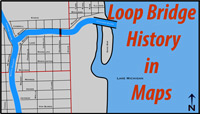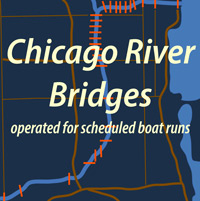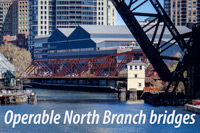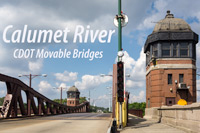W. Jackson Blvd. bridge - opened on January 29, 1916
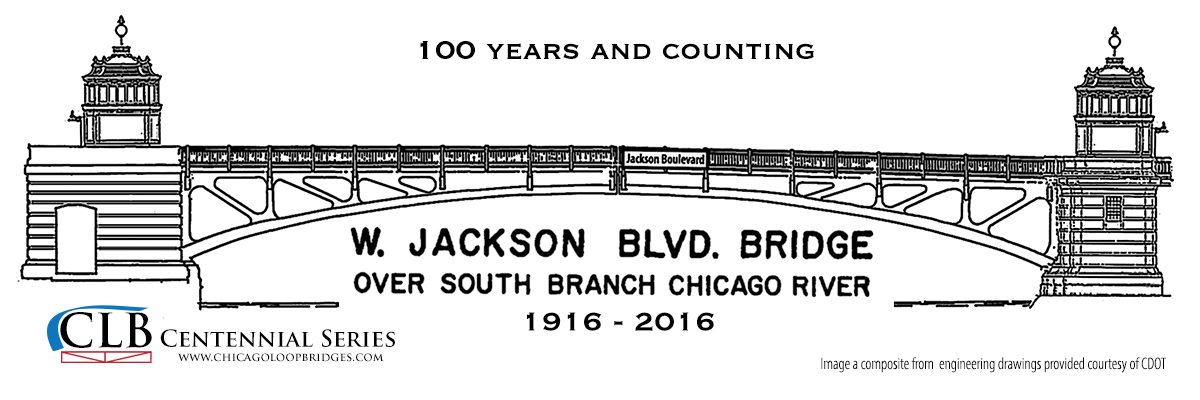
The second of the eighteen Loop bridges will reach the century mark on January 29, 2016. The Jackson boulevard bridge joins the Washington boulevard and Lake street bridges in the Loop “100 Club.”
The dedication ceremony for the bridge was a relatively low-key affair. According to the Chicago Daily Tribune published on January 30, 1916, “An automobile loaded with sanitary district trustees and engineers shot across the new Jackson boulevard bridge a few minutes after 2 o'clock yesterday afternoon, and thereby the new structure was formally dedicated.” A convoy of fifteen cars followed carrying city employees, civic and automobile club members.
Chicago was under pressure to replace center pier swing bridges on the Chicago River and the job was taken on by both the Public Works Department and the Sanitary District. The Jackson boulevard bridge is the fourth and last Loop bridge built by the Chicago Sanitary District. The District built Scherzer rolling lift bridges at Randolph, Dearborn, and State streets. The Jackson bridge is a Strauss designed trunnion bascule bridge and it is the sole surviving Sanitary District bridge in the group of eighteen Loop bridges.
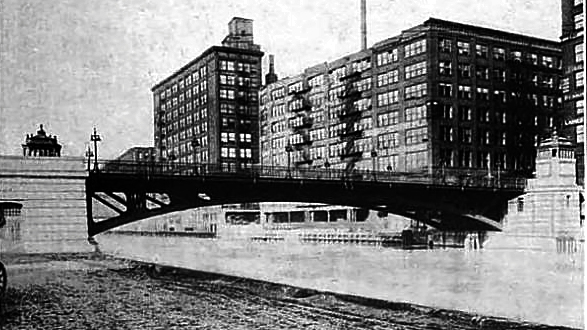
Image of Jackson Blvd bridge in 1916 from "Bascule Bridges," by J. B. Strauss, Proceedings of the second Pan American scientific congress, 12/27/1915 to 1/8/1916 (digitized by Google)
The Strauss Bascule Bridge Co., led by Joseph Strauss, was the consulting engineering firm for two Loop bridges (Jackson Blvd. and Lake Shore Dr.). The remaining sixteen are Chicago-type trunnion bascules designed by the Chicago Public Works Department. Strauss is better known as chief engineer on the Golden Gate bridge.
The bridge plaque provides the names of most of the organizations responsible for the design and construction of the bridge. Great Lakes Dredge and Dock Co. built the substructure and the Stroble Steel Co. was responsible or the superstructure. The plans were approved by both the Sanitary District and the City Engineer, John Ericson. The architectural features were designed under the auspices of the Chicago Plan Commission.
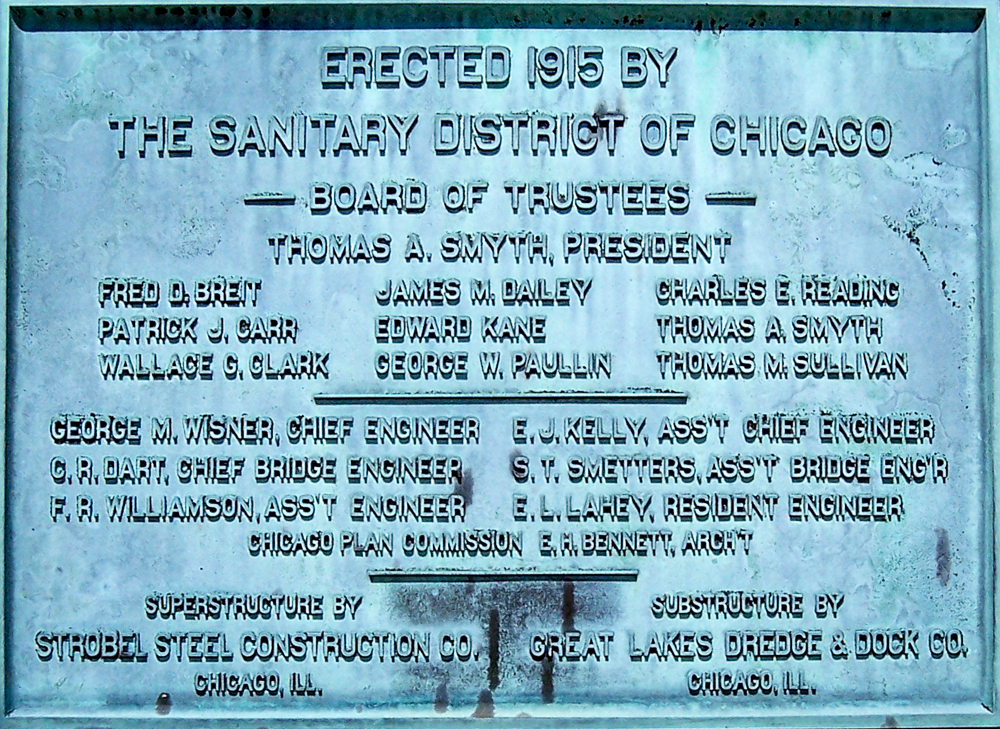
This is the first Loop bridge to conform fully to the ideals of the 1909 Plan of Chicago. As described in the April 4, 1913 edition of the Chicago Daily Tribune: “Under the proposal of the plan commission all the machinery on the bridge will be covered by concrete housings, giving an appearance of solid masonry. Bridgetenders' quarters will be so situated as to be invisible to the pedestrian crossing the bridge. Supports for the machinery will rest on the river bottom and will not move with the bridge.”
Until this point in time, bridge houses were wood clad structures and the abutments were not normally enclosed with masonry. In addition, the aesthetics of the structural support of the bridge deck were not considered an important part of bridge design prior to the adoption of the 1909 Plan. The Plan Commission's ideal bridge had no supporting structure showing above the bridge deck, allowing a clear view of the surrounding area. The Jackson boulevard bridge was the first of the single deck Loop bridges to achieve this ideal. The cost of these aesthetic features was $20,000 or about 10% of the total cost of the bridge.
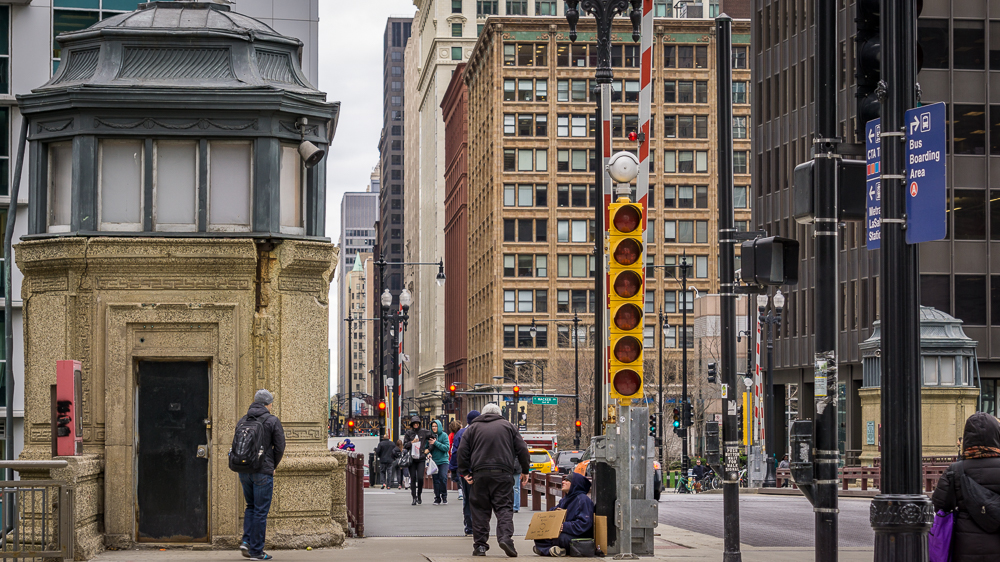
A view across the deck of the Jackson boulevard bridge, showing its concrete houses & openness.
As with many Loop bridges, the current Jackson bridge is not the first bridge built at this crossing, but it is the longest lasting bridge built here. This bridge replaced a center pier swing bridge built in 1888.
Route 66 began at Jackson and Michigan in 1926 making the Jackson boulevard bridge the first bridge on that storied highway as it made its way westbound from Chicago. Jackson boulevard was a 2-way street until the mid-1950s when it became one-way eastbound. At that point Adams street was made the westbound portion of Route 66 out of the Loop.
In its first full year the Jackson boulevard bridge was operated about 3000 times. Today the bridge is operated about 40 times per year, mostly for sailboat runs between dry dock facilities on the South Branch of the Chicago River and Lake Michigan. Because of its proximity to Union Station pedestrians outnumber vehicles in terms of daily crossings.
While the houses have lost some luster over the years, the Jackson boulevard is still a handsome bridge and always fun to watch as it operates. Happy 100 to the Jackson boulevard bridge – may we all work so well at that age.
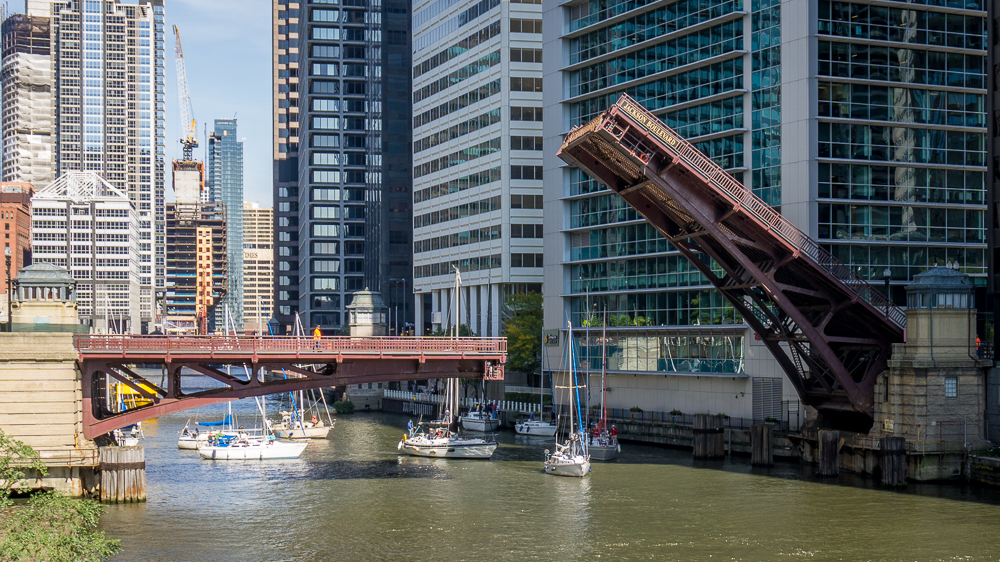
Image of Jackson Blvd bridge in 2015 during a Fall boat run
****
Sources:
“Jackson Boulevard bridge conforms to Chicago Plan” April 4, 1913; ProQuest Historical Newspapers; Chicago Tribune
“Jackson bridge at work” January 30, 1916; ProQuest Historical Newspapers; Chicago Tribune
“Progress on the Jackson St. Bascule Bridge, Chicago” Engineering News, v.74, July 22, 1915; 186.
“Bascule Bridges” by J.B. Strauss; Proceedings of the Second Pan American Scientific Congress, Section V – Engineering, Monday December 27, 1915 to Saturday January 8, 1916, Glen Levin Swiggett, Editor; Washington Government Printing Office, 1917. Digitized by Google




